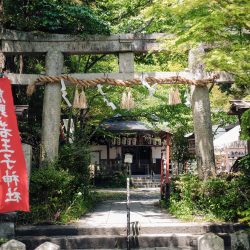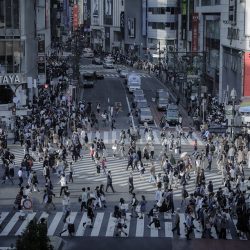You’re in Japan and it’s the end of Summer. If you’re from the EU like many of our students, you may find it’s pleasantly warm. But there’s a trick! In September and October, it’s the Typhoon season. If you’re around for a while during those months, it’s very likely you’ll have to experience one. If you’re studying with us now or just curious, then indeed you may wonder “A typhoon’s coming: what should I do?”

Typhoon 19 (Hagibis) approaching Japan – NCIT Himawari Realtime
What are typhoons?
Typhoons are tropical cyclones, just like Hurricanes and Cyclones. We use the Japanese name, 台風(たいふう or taifuu) in English when they occur in the Pacific ocean. They are a yearly occurrence here in Japan. They differ from tornadoes by their scale, and can cover the equivalent of the whole European continent. Because of this they last much longer, but don’t usually pack the same punch, unless you live on a small isolated island. They lose much of their strength when they hit large masses of land, like Japan.
Still, they can bring possibly devastating winds, torrential rain and floods. Storm surges (flooding due to the exceptionally high tide and waves) and landslides are some of the associated risks. However, just like for earthquakes, Japan is also exceptionally well prepared for them.
A typhoon’s coming: what should I do?
First of all, keep yourself up to date with the latest weather information, several times a day if possible. Your most reliable source of information is the Japanese Weather Agency or JMA. The JMA has an English website with weather reports and, most importantly, guidelines for every location in Japan. Find it here: https://www.jma.go.jp/jma/indexe.html
For less formal but also great information we recommend the amazing website and an app Windy
We always let our students know about any incoming typhoons. Ask us anything!
In cities, you will be safe if you stay inside during the worst hours of the storm. In rural areas, additional measures might be necessary. For exceptionally big typhoons, if you live outside of a city, some places might be designated as evacuation areas. Often, these are schools or other official/public buildings. This is especially likely if you live close to the sea or the mountains. Follow the government instructions and the JMA alerts. If you are studying with us, of course, you can ask us directly, and even call our 24/7 emergency number.
How to prepare
It’s a good idea to buy some food in advance, as all stores will be closed hours before a typhoon. They will typically operate as normal a day after.
Power outages are a common occurrence in rural areas after larger typhoons, but smaller ones typically don’t cause too much trouble. In cities, it is very rare but still a possibility. If that happens, there is nothing special you need to do immediately. If you’re studying with us, let us know and we will make sure to keep you informed.
Transport may be disrupted. It’s very likely that all train lines will stop, and stations will close a few hours before the typhoon hits.
Often, the rain will be so strong you wouldn’t want to put a foot outside. But if the wind has receded and you really need to go, you may want to prepare a pair of boots and a raincoat. Do not go out unless the wind speed subsided to safe levels.
Can I go out now?
Typhoon touchdowns are short-lived events. It should be over in less than a day, but rarely, heavy rain and wind could continue for up to 2 days. Again, the weather news is your best friend, but as a rule of thumb, when the wind and rain weakens, it does not come back. The only exception to this is if the eye of the typhoon passes right over you, which is extremely unlikely on mainland Japan.
The weather after a typhoon tends to be extremely clear, so much that it even has a name: 台風一過 (たいふういっか、taifuu ikka)! However, especially outside of cities, the damage can still be a source of train delays, closures and power outages for weeks or even months. Roof and light structural damage, as well as litter on the beaches can take months to be fully taken care of if an area is badly hit. Stay clear of any fallen cables.
Main train lines will generally operate as normal within a day after a typhoon, but smaller ones may take longer to become fully operational. Road damage should be limited but bus service disruption is possible even after the storm has passed. Onsens, Ryokans and accommodations in the countryside may need to close for a while if they were damaged, always double-check first before going.
All this can be worrying, but usually just staying inside is all you’ll need to do 🙂 You won’t see anyone panic here about a typhoon, it’s a very common phenomenon. If you’re studying with us, always feel free to ask us about it; we’ve been through more than one already!


